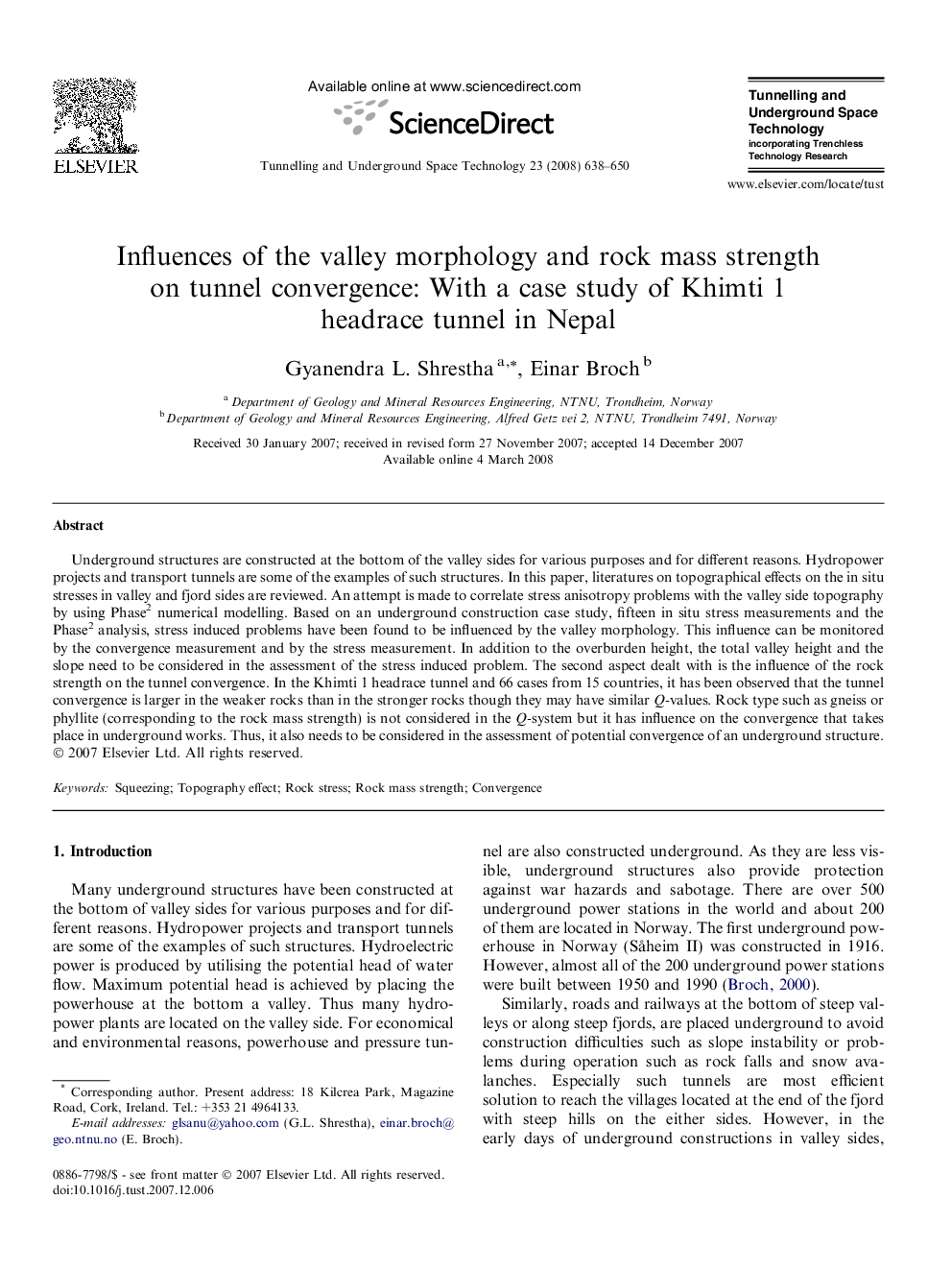| Article ID | Journal | Published Year | Pages | File Type |
|---|---|---|---|---|
| 312714 | Tunnelling and Underground Space Technology | 2008 | 13 Pages |
Underground structures are constructed at the bottom of the valley sides for various purposes and for different reasons. Hydropower projects and transport tunnels are some of the examples of such structures. In this paper, literatures on topographical effects on the in situ stresses in valley and fjord sides are reviewed. An attempt is made to correlate stress anisotropy problems with the valley side topography by using Phase2 numerical modelling. Based on an underground construction case study, fifteen in situ stress measurements and the Phase2 analysis, stress induced problems have been found to be influenced by the valley morphology. This influence can be monitored by the convergence measurement and by the stress measurement. In addition to the overburden height, the total valley height and the slope need to be considered in the assessment of the stress induced problem. The second aspect dealt with is the influence of the rock strength on the tunnel convergence. In the Khimti 1 headrace tunnel and 66 cases from 15 countries, it has been observed that the tunnel convergence is larger in the weaker rocks than in the stronger rocks though they may have similar Q-values. Rock type such as gneiss or phyllite (corresponding to the rock mass strength) is not considered in the Q-system but it has influence on the convergence that takes place in underground works. Thus, it also needs to be considered in the assessment of potential convergence of an underground structure.
